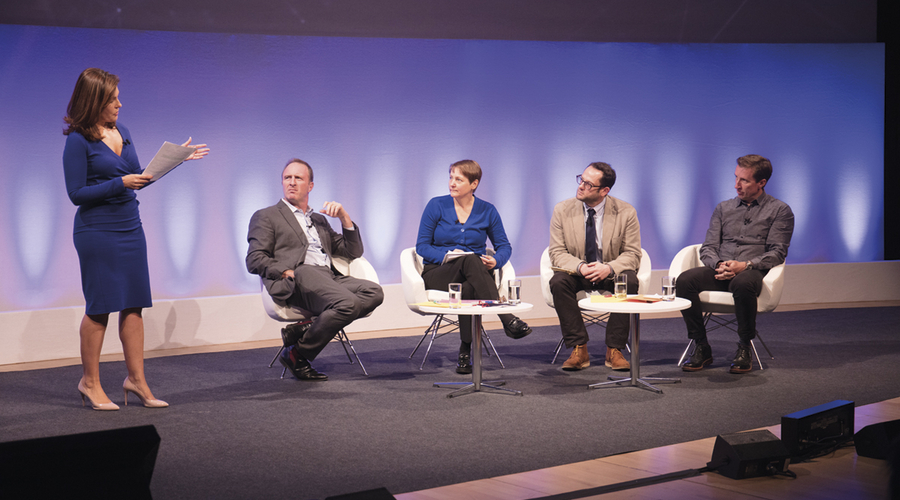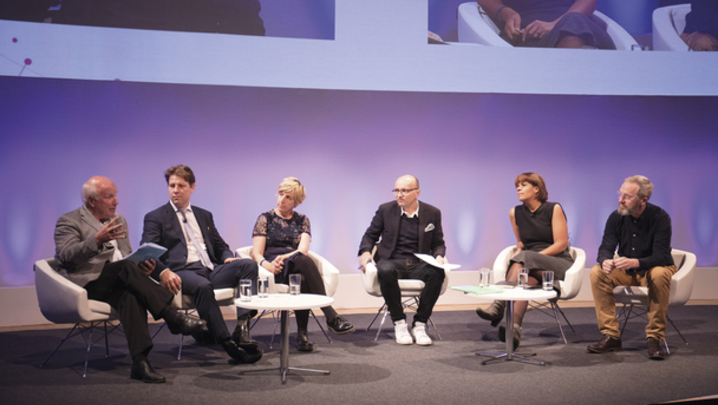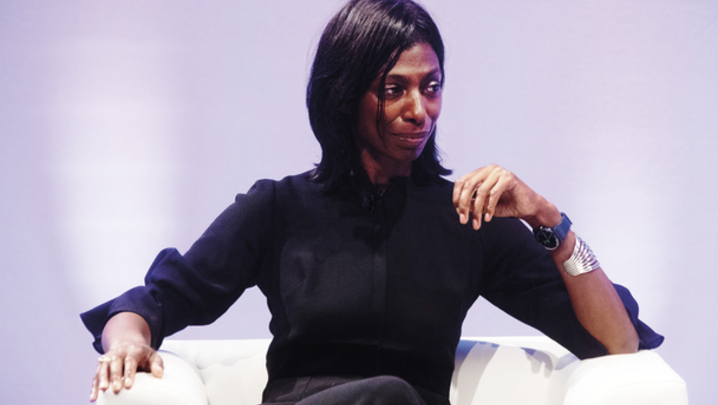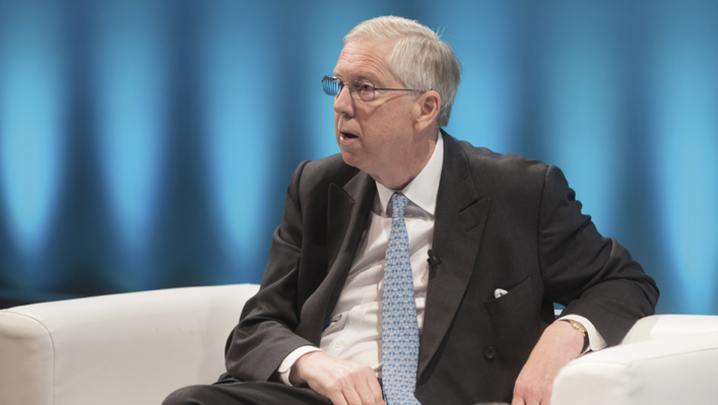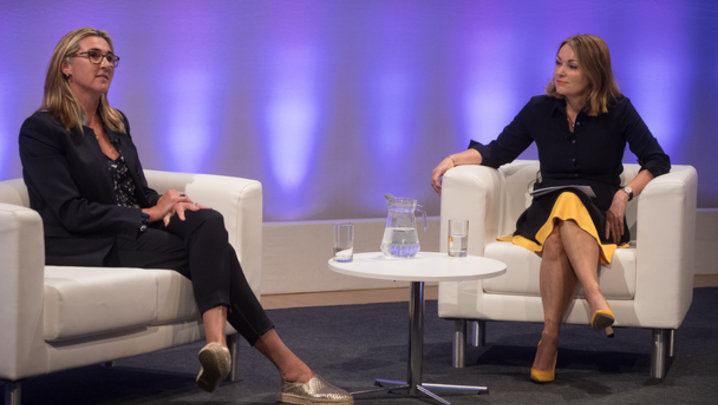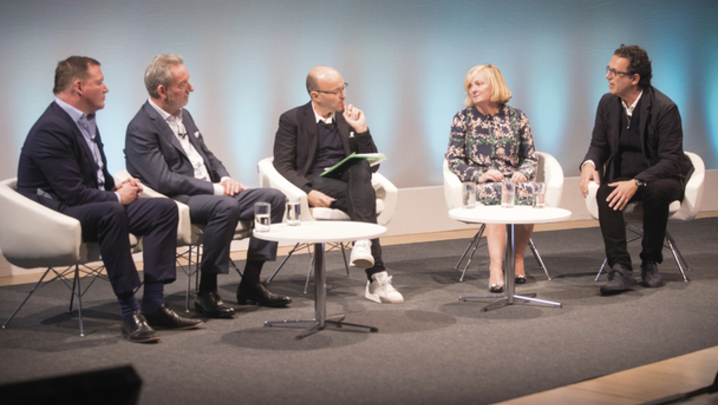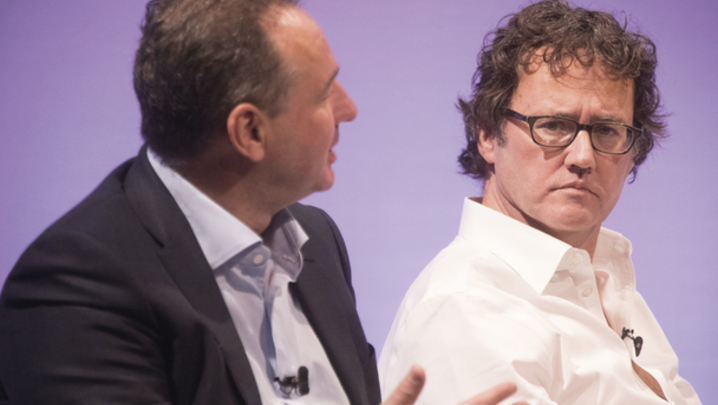Steve Clarke watches news executives decide how to break emerging details of a terrorist attack as online reports of the event multiply
"Publish and be damned.” That was the credo of the great newspaperman Hugh Cudlipp, who ran the Daily Mirror during its glory days and was the architect of post-war popular journalism.
If only it were that simple in the age of Twitter, Facebook and YouTube. For TV news people, the digital era is throwing up new challenges and dilemmas, no more so than when a big, national news story breaks, such as a terrorist attack.
Regulated UK broadcasters BBC, ITV and Sky are constrained by codes enforced by Ofcom and by the need to maintain their reputation for trusted, award-winning journalism. Yet, dramatic footage of breaking news is likely to be available online, filmed by members of the public, long before TV news crews arrive on the scene.
It is a point of debate whether professional TV news organisations should show footage of this type.
There are also profound ethical questions to consider: TV news executives need to be attuned to the possibility of endangering people’s lives and the risk of jeopardising the integrity of a police operation.
This was the background to an enthralling session in which news bosses from the BBC, BuzzFeed, ITN and Sky News were tested by a number of fast-developing fictional scenarios.
This hypothetical breaking story involved a group of armed gunmen taking hostages in a London restaurant. Dining together inside were an MP and a British arms dealer who had been active in the Middle East.
Expertly chaired by Barbara Serra, a presenter for Al Jazeera, the first decision the news chiefs on the panel had to take was a fundamental one – when to break the story?
1. The panellists are shown footage of a TV news editor, “George”, at his desk. The incident first comes to George’s attention via reports on social media. He rings the restaurant to check the story but there is no reply.
Seconds later, one of his reporters calls to tell him that he has been told by the police that they have received a security alert from an MP. The Met won’t confirm any details “but there is a sense of panic” at Scotland Yard.
The police are asking the media not to speculate on the incident or the identity of those caught up in it. “The cops are very worried about us saying too much that might scupper negotiations with the gunmen,” George is told by his reporter.
Based on this information received would the news organisations run the story? James Harding, the BBC’s director of news and current affairs, said he would need more information before committing to broadcast.
ITN’s director of newsgathering, Julie Hulme, agreed. She would wait until a second source could corroborate the attack, ideally by getting one of ITN’s own reporters to the scene.
But Sky News’s director of newsgathering and operations, Jonathan Levy, said he “would probably go to air with some limited information, stressing that a police source has confirmed there is a security alert”.
However, the Sky report would at this stage make no mention that a siege might be taking place. Buzzfeed’s head of news, Stuart Millar, said he would also break the story.
Serra asked Harding if he would feel left behind. How much pressure would there be on him to run the story? “We’d want to get something more before we went on air,” insisted the BBC executive.
2. In the next phase of the scenario, lobby journalists hear that an MP is eating in the restaurant with arms dealer Craig Summers, an old school friend of the MP. This information is also being tweeted by credible journalists.
Would Sky News name the MP? “No, we’d need more verification. Her family might be watching and they’re likely to be shocked and upset,” said Levy.
The BBC and ITN said they would now break the story because more details of the incident had emerged. However, they both agreed with Sky about not identifying the MP.
Explained Hulme: “By now, we have a reporter at the scene and we might be getting off-the-record briefing from the cops, but we would not name the MP. We could be alerting the hostage takers that there is an MP in the room, which might change the situation. That is the last thing you want.
“Also, our security correspondent will be talking to the authorities and getting some sense of what is going on.”
Harding stressed that BBC News was still at the stage of saying: “We are hearing reports of a security incident.”
3. The third phase takes place approximately an hour after the raid on the restaurant. Social media is now all over the story and running details of how many people are trapped inside.
Some leaked CCTV footage has emerged. It shows a group of armed men entering the restaurant by the back door. “These first images of this story are so crucially important to our visual narrative,” said Serra. Would the news executives publish the video?
The panellists stressed the need to verify its accuracy. “There are gizmos that you can check to see if it’s been on social media before,” said Hulme.
Serra pointed out that the footage was uploaded by a security guard and posted on WhatsApp.
In that case, said Hulme, ITN would want to speak to him. A key consideration before publishing the footage was whether it could endanger the lives of the people inside the restaurant and “jeopardise anything operational happening at the scene”.
Levy, too, emphasised the importance of verification: “We’d search the internet and see if there is any similar footage that we could check it against.”
BuzzFeed’s Millar pinpointed one of the difficulties: “The problem with all big, breaking news stories is that people will use fake videos just for the clicks, just for the retweets. It’s done deliberately to mislead. Your starting position, when you’re dealing with social media in a live, breaking-news situation, has to be: ‘Why are these lying bastards lying to me?’”
4. Video that hasn’t appeared so far on social media has come to light. George asks his news organisation how much it is prepared to pay – the supplier wants £20,000.
Sky said it was prepared to pay £3,000-£5,000; ITN, £5,000; and BuzzFeed, nothing. Said Levy: “Assuming that the source is credible and a bystander to the event, and not in any way connected to it, it is reasonable to pay for it. We pay people who supply video all the time. Also, you have to factor into how much you bid that there will be quite a lot of other video out there as well. There always is.”
Harding said he wouldn’t pay for it. He explained: “You can’t use it. You have to run it by the police and look at privacy issues and ongoing security responsibility questions.”
He added: “You should be willing to pay people for good footage, but not in a breaking news situation.”
5. The next test for the news executives is the appearance of a ransom video, hosted on what looks like an Islamic State website. It contains threats of violence against the hostages.
Would panellists show the film?
They were unanimous in saying no. “The police will be very active at this point,” said Hulme. “They may impose a blackout or request us not to report certain things. When people’s lives are at risk, we will always be very reasonable regarding those risks.”
6. Online reports begin to name the lead gunman, and there is some corroboration.
The panel agreed that it would be wrong to name him. Levy summed up their thoughts: “Until the police name him, there is no motivation for us to. This session is about whose news do you trust? You’re trusted for being right.”
7. Three hours after the start of the siege, reporters on the ground are hearing that the police may soon storm the building. A woman living opposite the restaurant, who can see everything happening inside, is offering the chance to film from her flat. She also has video from her phone of what’s taken place so far.
Would any of the news outlets show this video and would they accept her offer of the live position? Levy said he would decline on the grounds of the risk of compromising the police operation and the hostages’ dignity.
Harding, however, was in two minds. He said: “This one is a much tighter call. I’d be quite tempted to run it. You’d probably lean towards it because, if you look at these pictures, you don’t compromise any of the individuals and you do get a sense of the scene.
“If you did put it up, the police would be on you really fast. Then, there is a practical point – we would be clambering all over each other to get to that live point.
“The one thing that I think is an argument for it is that it gives you a sense of what’s happening.”
8. In the final video clip, being sent live from the woman’s flat overlooking the restaurant, the audience hear gunfire and explosions – the last of which, apparently right under the flat, terminates the transmission….
Summing up, the news executives were keen to emphasise how their jobs relied on a tried and tested professionalism that was valued by audiences.
“What we’ve identified is that regulated broadcasters are much more responsible than social media, where you’ll get much more information online – some of it true, some of it not,” Harding said. “I think we were much more haunted by this three years ago than we are now.
“What you are seeing is that people really ascribe a value to having news sources they trust… even if they have to wait a little bit longer to find out what’s happened.”
‘Session Five: In whose news do we trust?’ featured Chris Banatvala, independent media consultant and former Ofcom Content Board member; James Harding, director, news and current affairs, BBC; Julie Hulme, director of newsgathering, ITV News; Jonathan Levy, director of newsgathering and operations, Sky News; and Stuart Millar, head of news, BuzzFeed. It was chaired by international broadcaster Barbara Serra and produced by Esmé Wren, with VT production by Amy Hitchcock.
Official verdict: too cautious?
Throughout the session, former Ofcom Content Board member Chris Banatvala was asked for his view of the panel’s decisions.
Early in the session, the broadcasters emphasised the importance of always getting two sources before running a story. So, session chair Barbara Serra wanted to know if this practice was written into Ofcom codes.
‘No, that’s really internal journalistic good practice,’ said Banatvala. ‘Ofcom is not involved in making programmes.… It requires due accuracy, it does not say broadcasters need one source or five sources.
‘It’s purely up to the broadcaster, but the broadcaster has to be able to provide evidence that it is taking due care when it is going on air.’
Later, as the session drew to a close, noting the panellists’ overall caution in reporting the incident, he wondered ‘if the pressure on them [the news organisations] is greater than they’re giving credence to’.
Banatvala added: ‘Within about 10 minutes, this material may well be all over the web. People will be blogging about it. They’ll be under huge pressure to put this out.…There will be under more pressure to show it because everyone else is doing it.’

